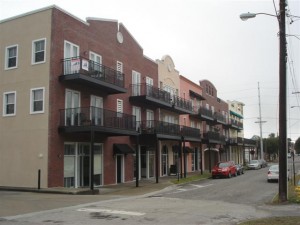 Reserves can be one of the most challenging aspects of putting together a budget. Some communities are very thorough with their reserve analysis, while others may not be as diligent. Attempting to estimate the amount of the reserves your community needs depends mainly on the size of your community and the amount of common area reserve items involved. If there are only a few items that require reserves, then doing an internal reserve study may be totally sufficient. However, if there are a lot of reserve items, complex systems, or items that you are completely unfamiliar with, a call to get a professional reserve study may be in your best interest.
Reserves can be one of the most challenging aspects of putting together a budget. Some communities are very thorough with their reserve analysis, while others may not be as diligent. Attempting to estimate the amount of the reserves your community needs depends mainly on the size of your community and the amount of common area reserve items involved. If there are only a few items that require reserves, then doing an internal reserve study may be totally sufficient. However, if there are a lot of reserve items, complex systems, or items that you are completely unfamiliar with, a call to get a professional reserve study may be in your best interest.
As with anything remotely complicated, the best way to perform a do-it-yourself reserve study is to break it down into smaller actionable steps. Here is how you could create a reserve study for your own association in five steps.
Step 1. List all of the reserve items your community association should be funding and get feedback from others to make sure the list is comprehensive and accurate
This will be of crucial importance because you can only fund the items you plan. Make sure you don’t neglect or by-pass this step, because it will help you gather ideas on what the possible items are for your reserve account to fund and will serve as your starting point.
Step 2. Figure out the size or quantity of all reserve items
This key step will require some time and effort. Here is the way to do it properly: find the association documents, such as condo plats or county tax records, to obtain the recorded drawings or boundaries for your association and buildings. Also, look at aerial photos of your property in a program such as Google Earth to gain a better understanding of layouts and sizes in your community. The key reason why this will be significant is you can’t accurately predict reserves if your sizes and quantities are grossly incorrect to begin with.
Step 3. Figure out the costs of all reserve items
You do this so you can obtain cost subtotals for each category. In addition, you will just want to obtain these numbers from a reliable cost source such as Marshall Swift, RS Means or obtain bids from outside vendors and contractors. If you do not have access to any of those sources, an internet search may be used, but just keep in my mind that it can be very subjective.
Step 4. Figure out the useful life and remaining life of all of the reserve items
This step can be tricky. Marshall Swift handbooks have estimated useful lives for many building components. In older communities, another way to get the useful life is to figure how long that component lasted in its last life cycle.
Step 5. Perform the calculations
For each component, take the current estimated replacement cost and subtract from it the account balance for that reserve item. Now, with this number, divide it by the remaining life. This quotient is what you should fund in the next year for this particular reserve item.
Many communities perform their own reserve analysis and do it sufficiently. However, it certainly takes some time, effort, and research. There is no cut and dry answer as to whether your community should analyze its reserves in-house or get help from a professional. Just know that if you got off track and failed to go by the advice above or just felt uncertain about certain steps, then it may be time to call a professional and get a professional reserve study completed.